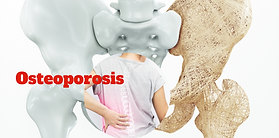100 Diseases Plus
Muscle and Nerve pain (musculoskeletal pain)
Musculoskeletal pain affects the bones, muscles, ligaments, tendons, and nerves. It can be acute (having a rapid onset with severe symptoms) or chronic (long-lasting). Musculoskeletal pain can be localized in one area, or widespread.
Lower back pain is the most common type of musculoskeletal pain. Other common types include tendonitis, myalgia (muscle pain), and stress fractures.
Muscular Dystrophy
Muscular dystrophy (MD) is a group of more than 30 inherited diseases. They all cause muscle weakness and muscle loss. Some forms of MD appear in infancy or childhood. Others may not appear until middle age or later. The different types can vary in whom they affect, which muscles they affect, and what the symptoms are. All forms of MD grow worse as the person’s muscles get weaker. Most people with MD eventually lose the ability to walk.
Myoma
A uterine myoma (myoma uteri) is a solid tumor made of fibrous tissue; hence it is often called a ‘fibroid’ tumor. Myomas vary in size and number, are most often slow-growing and usually cause no symptoms. Myomas that do not produce symptoms do not need to be treated. Approximately 25% of myomas will cause symptoms and need medical treatment
Nephrolithiasis (Kidney Stones)
A kidney stone is a solid piece of material that forms in the kidney from substances in the urine. It may be as small as a grain of sand or as large as a pearl. Most kidney stones pass out of the body without help from a doctor. But sometimes a stone will not go away. It may get stuck in the urinary tract, block the flow of urine and cause great pain.
Neuralgia
Neuralgia is a sharp, shocking pain that follows the path of a nerve and is due to irritation or damage to the nerve.
Neuro Muscular Disorder
Neuromuscular disorders affect the nerves that control your voluntary muscles. Voluntary muscles are the ones you can control, like in your arms and legs. Your nerve cells, also called neurons, send the messages that control these muscles. When the neurons become unhealthy or die,
Osteoarthritis
Osteoarthritis is the most common form of arthritis. It causes pain, swelling, and reduced motion in your joints. It can occur in any joint, but usually, it affects your hands, knees, hips, or spine.
Osteoporosis
Osteoporosis makes your bones weak and more likely to break. Anyone can develop osteoporosis, but it is common in older women. As many as half of all women and a quarter of men older than 50 will break a bone due to osteoporosis.
Pancreatitis
The pancreas is a large gland behind the stomach and closes to the first part of the small intestine. It secretes digestive juices into the small intestine through a tube called the pancreatic duct. The pancreas also releases the hormones insulin and glucagon into the bloodstream.
Paralysis
Paralysis is the loss of muscle function in part of your body. It happens when something goes wrong with the way messages pass between your brain and muscles. Paralysis can be complete or partial. It can occur on one or both sides of your body. It can also occur in just one area, or it can be widespread. Paralysis of the lower half of your body, including both legs, is called paraplegia. Paralysis of the arms and legs is quadriplegia.
Parasitism- Parasitic infections
Parasites are microorganisms that live off of other organisms, or hosts, to survive. Some parasites don’t affect the host. Others grow, reproduce, or give off toxins that make the host sick resulting in parasitic infection.
Patients with Debilitating Disease
Debilitating diseases come in many shapes and forms – from those that attack the muscles in our body and affect our physical abilities to those that affect our brain function and impair our thought processes.
People with debilitating diseases face a number of challenges that take an extensive toll on their health and finances. A person’s life can be completely changed in just a few short months as the disease progresses.













